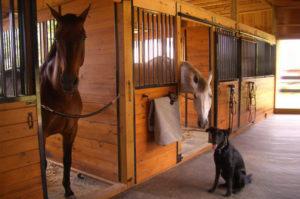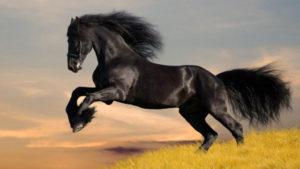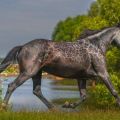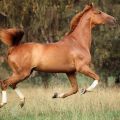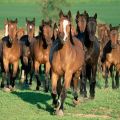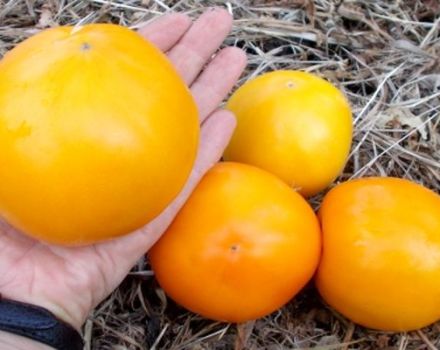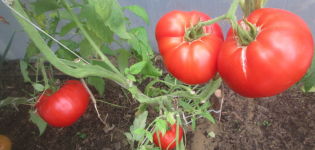Description, pros and cons of tinker horses, rules of maintenance and cost
Tinkers, or Irish mares, are spotted horses that are also called gypsy draft horses. They descended from the medieval gypsy workhorses. A distinctive feature of the breed is long manes and tails, thick hair on the legs. Outwardly, mares resemble Dutch Frisians, but their piebald color betrays their nomadic past. Tinkers are versatile horses for work and for the soul.
Historical data on Tinker
The origins of the Irish breed are an integral part of the history of the Gypsy nomads. In the middle of the 15th century, the Romans arrived in Britain and settled in the islands. In Ireland, they pushed the Tinker tribes out. The old-timers were hostile to the settlers, and there were wars between them. The nomadic way of life gradually reconciled tinkers and gypsies. They became related and united into one nationality.
Alien and local gypsies kept horses. After merging, the horses grazed together and interbred. This is how the gypsy harness breed or the Irish Cob naturally arose. From tinker horses, they took on the strength and uncouth look, and from the gypsy horses - long manes.
The typical piebald color is also due to the gypsy lifestyle. The color was considered ignoble, therefore piebald horses were low in value. They were not accepted into military units due to their unpresentable rural appearance. The gypsy was not interested in appearance, but in the excellent working qualities of animals. Therefore, they got strong and hardy horses for a song.
The Roma did not engage in purposeful selection work, did not monitor the purity of the breed and did not keep track of the livestock. Pedigree and selective breeding began in the United States after 1945, when Irish mares became popular in the United States.
The Irish Cob Association has operated since 1996 and herd books are maintained. The tinker population is limited, so future buyers will become owners of horses of a rare breed.
Features and Description
Irish mares combine the power of heavy trucks and the beauty of the Frisians, but they are inferior in speed to the Akhal-Teke horses.

Dimensions and weight
Tinkers are large and small - from 1.3 meters at the withers to 1.6 meters. For riding, you can choose a horse suitable for the rider's height.
In the United States, cobs are classified by height:
- up to 142 centimeters - mini;
- 142-155 centimeters - classic;
- above 155 centimeters - grand.
The weight of Irish cobs varies with height. Low-growing individuals weigh from 240 kilograms. The maximum mass of a tall tinker is 700 kilograms.
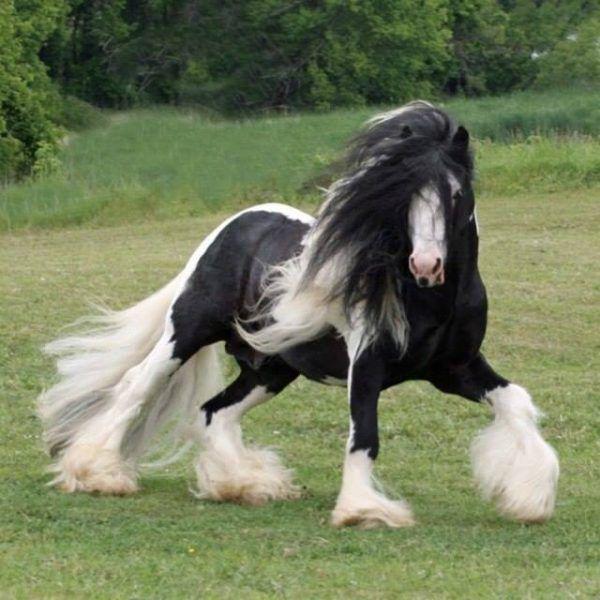
Exterior
External features of Irish Cobs:
- dense wide body;
- strong shoulders;
- strong straight neck;
- a head with a sloping rounded profile and a beard;
- long straight ears;
- legs with prominent knee joints;
- the legs are covered with long hair falling over the hooves;
- dense, finely wavy mane and tail.
The Tinker is short and angular compared to the slender Arabian horse. The color of the cobs resembles that of a cow. Their hind legs are sometimes marked with the letter "X", like cows. The hooves are completely hidden by the hair. Tinkers seem to be dressed in natural bell-bottomed trousers, therefore they are associated with hippies, nature and nomadic gypsy life.
Overall, Tinkers look like country mares, but their bushy manes and tails give them a festive, fairground look. The mares look authentic when harnessed to a cart, painted wagon, and like riding horses.
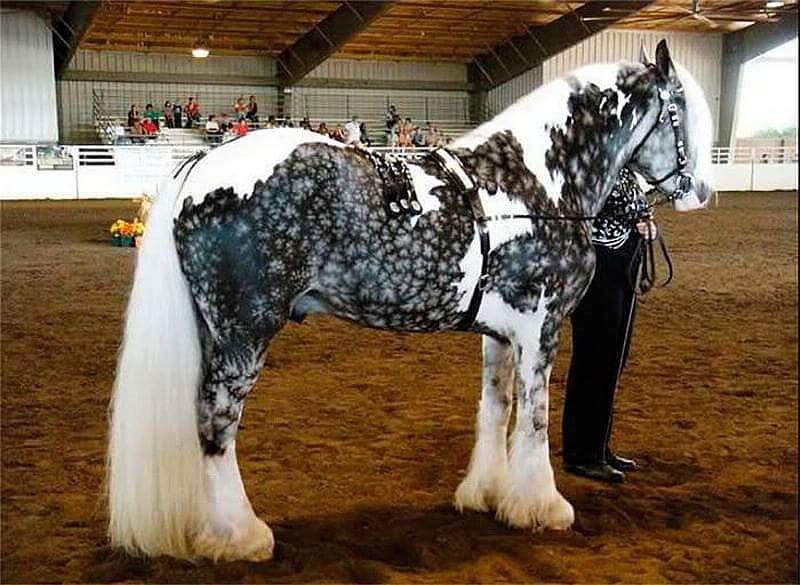
Animal color
A distinctive feature of cobs of all colors is irregular white spots. Piebald tinkers are distinguished by types:
- overo - spots are located on the sides, dark color on all or several legs, monochromatic tail;
- tobiano - light legs, spots on the chest and on the neck, the tail consists of light and dark strands, the dark forehead is sometimes decorated with a white "star";
- tovero - a mixture of the previous types.
There are tinkers of black, forelock, roan colors.
The character and disposition of the Irish Cob
Phlegmatic horses are patient with the rider. It is easy and convenient to learn horseback riding on cobs, but in a team they can seem lazy. The presence of tinkers acts as a sedative on the nervous riding horses, so they are brought together to the start of the competition.
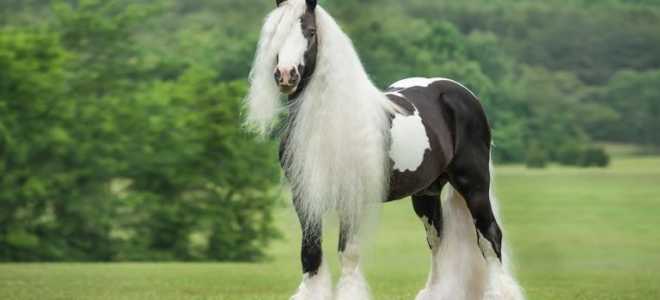
Tinker heavy haulers do not run as they get tired of the gallop so quickly. You need to develop their speed in hard training. But mares by nature have high jumping ability. They move with a wide, free, but soft gait.
Distribution regions and areas of use of this breed
Fields of application of tinkers:
- sports - driving, horse riding, training;
- entertainment - participation in shows, exhibitions, city holidays;
- hobby - home breeding and maintenance;
- medicine - hippotherapy;
- agriculture is a draft force.
Natural habitat of the breed - Ireland. The gypsy harness horse spread throughout Europe and is very popular in North America. The harsh climate of the homeland hardened the cobs. They adapt well in warm and cold countries.
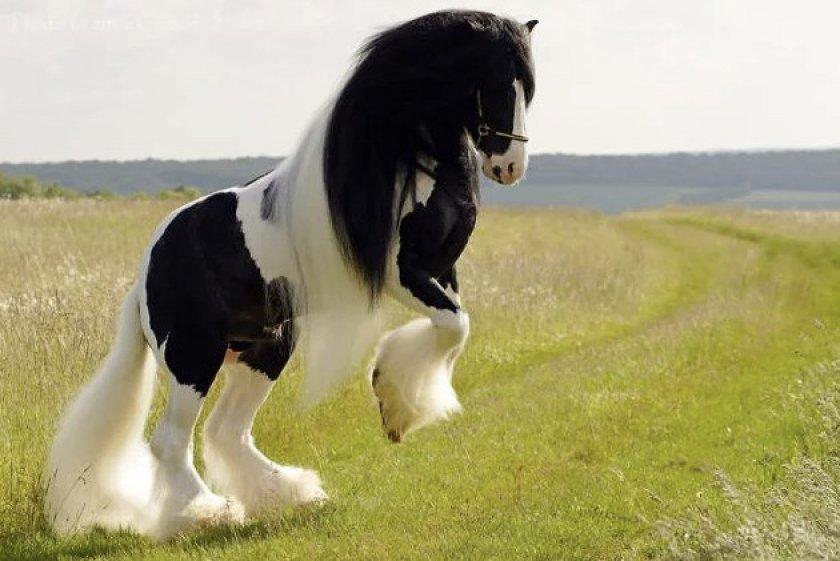
Pros and cons of content
Tinker ancestors lived in the open air. The gypsy breed is unpretentious in terms of keeping conditions. The indisputable advantages of cobs include:
- beautiful exterior;
- exclusivity;
- soft move;
- calm disposition.
Gypsy mares give a lot of milk. In stables, which contain several breeds, they are used as nurses for other foals. With milk, the docile nature of cobs is transmitted to newborns. Children of restive riding parents, fed on the milk of an Irish mare, grow up more obedient.
The disadvantages are:
- unsportingness;
- high price.

Horse hooves and manes are of concern to breeders. The appearance of cobs must be carefully looked after.
Growing and caring for animals
Modern gypsy horses are considered an elite breed, so they need a comfortable stable, balanced diet and a groom-stylist.
Stable
If tinkers share a room with other breeds, they will need separate stalls. As the only inhabitants of the stable, simple stalls will suit them. The Irish Cob stable should have three sections:
- walking room;
- room for water and veterinary procedures;
- compartment with stalls.
Separately, there is a place for storing feed, ammunition and cleaning equipment.
The stall size depends on the size of the tinker. Standard parameters are 3x2.5 meters.
Requirements for equipping a stable:
- ventilation, hoods - fresh air should enter the room, but not a draft;
- central heating or heaters - horses naturally heat the room up to +8 degrees, in cold winters additional heating is needed;
- litter - the floor of the stall or stall is covered with straw, sawdust, peat;
- water - plumbing in the veterinary section and for automatic drinkers.

The litter is changed every two days. The removable feeders are suspended at the level of the horse's chest.
The diet
Tinker nutrition includes all types of food:
- green - field grass, which animals eat in summer on grazing;
- rough - hay, chaff of spring crops;
- concentrated - cereals;
- juicy - root vegetables;
- silage - sunflower, corn.
The daily amount of hay depends on the weight of the animal. For 100 kilograms of mass, 4 kilograms of product are given. Hay contains calcium, protein and fiber. The basis of roughage is crushed oats and barley. The proportion of cereals in the daily diet depends on physical activity. If the tinker walks for 2 hours a day and is not involved in heavy work, it is enough to mix whole oats with chopped straw at a ratio of 200 grams per 5 liters. Under low loads, horses are given 2 kilograms of the mixture per day, with large loads - 7 kilograms.
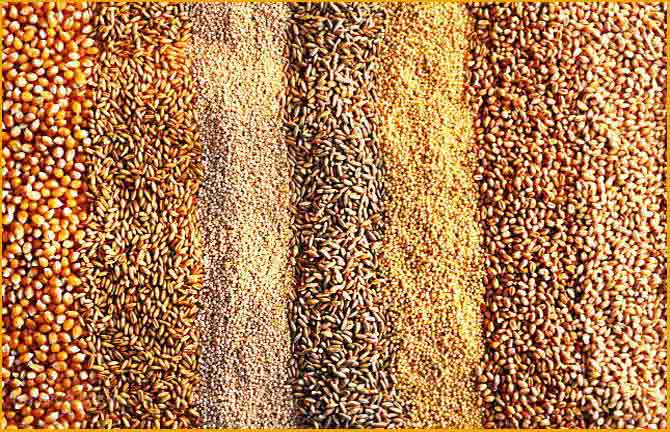
With active loads and sweating, tinkers need to eat 30 grams of table salt per day to restore the water-salt balance. Irish cobs benefit from boiled, parboiled and raw potatoes and raw carrots. Beets are an additional source of calcium. Silage is mixed with hay.
The daily ration of food for gypsy horses is divided into 5 meals and given out at the same time. Cobs should not be drunk immediately after exercise. You need to wait 2 hours and give water in small portions.
Hygiene and horse care
In the summer, after active workouts, tinkers are rinsed with warm water. In winter, water treatments are not carried out. The wool on the sides is cleaned with a scraper. The mane, tail and hooves are combed with a comb. Before a walk, it is advisable to braid the horses' braids, and unbraid them during rest. The mane and tail are washed 2 times a week with shampoo, hair conditioner is applied. Hooves of bare horses are cleaned with a special hook and rinsed after walks in the fresh air. Also, the nostrils of the cobs require special care - you need to wash off the dust from the nose and wipe it dry.
Grazing
In the summer, Irish Cobs can be kept free-range. In herd farms, horses themselves get food in the fields. For the winter, hay is prepared for them and placed next to the grazing area.
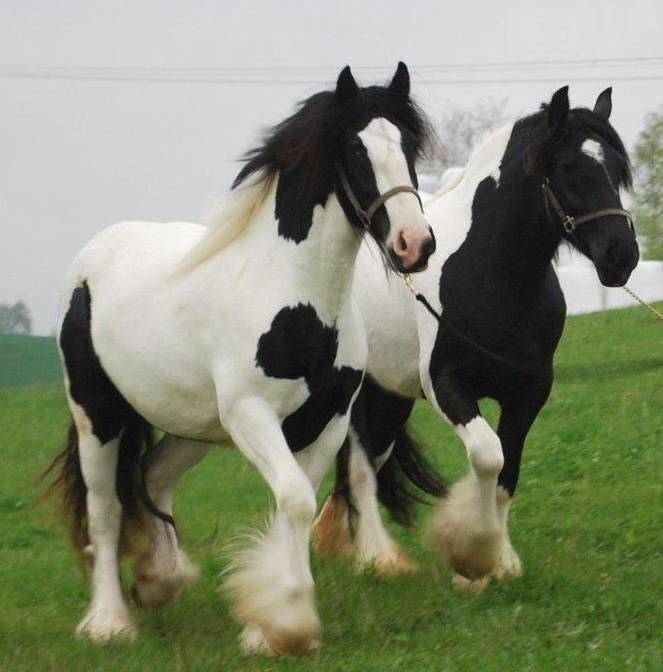
It is better for cobs to hibernate in a shelter, and in the summer they can be released into the field. Grazing horses should be taken to a watering hole 2-3 times a day, fed with grain and vegetables, and the condition of the hooves should be monitored.
Horseshoe
The gypsies did not shoe their horses. If the tinker spends a lot of time in the pasture, it does not need to be shod. For work in urban conditions, the Irish Cob is best "put on" so that the hooves do not knock on the asphalt.
Vaccinations and disease prevention
How to keep tinkers healthy:
- observe hygiene rules;
- avoid drafts in the stable;
- make a diet on the recommendation of a veterinarian;
- examine ears, eyes and teeth every day;
- bring the horse for a medical check-up every six months.

The main diseases against which vaccinations are given:
- anthrax;
- flu;
- rhinopneumonia;
- dermatophytosis;
- brucillosis;
- tetanus;
- rabies.
Once a year, animals should be examined for glanders, infectious anemia, mating disease, and leptospirosis.
Prospects for breeding a gypsy horse
Tinkers are in demand as a decorative breed. They are bred for sale in private hands, for horseback riding or riding in a team.Gypsy draft horses can be used as heavy trucks in agricultural work, so there are buyers among farmers.

average cost
Tinkers are among the most beautiful and expensive breeds in the world. Their cost in the USA is 10-25 thousand dollars. In European kennels, you can buy males at a price of 6 thousand euros. The cost of delivery must also be added to the price of a foreign horse.
Buying from private owners allows you to save on delivery and not worry about the animal's well-being after long transportation. According to the ads, you can buy a young stallion for 250 thousand rubles. Also, private owners offer stallions for mating for 10-20 thousand rubles.
Interesting facts about the breed
Irish Cobs have an interesting history, appearance and behavior:
- tinker is a dismissive nickname for gypsies. In Ireland, horses are only called cob, which means "strong horse";
- there are tinkers with brown and blue eyes. If a white spot on the head falls on the eye, the color of the iris will be light;
- Irish mares are phlegmatic even in protest. A stubborn cob cannot be moved.
Not only is the gypsy harness breed unique as a whole, but every cob is also unique - thanks to the pattern of spots that never repeats.
